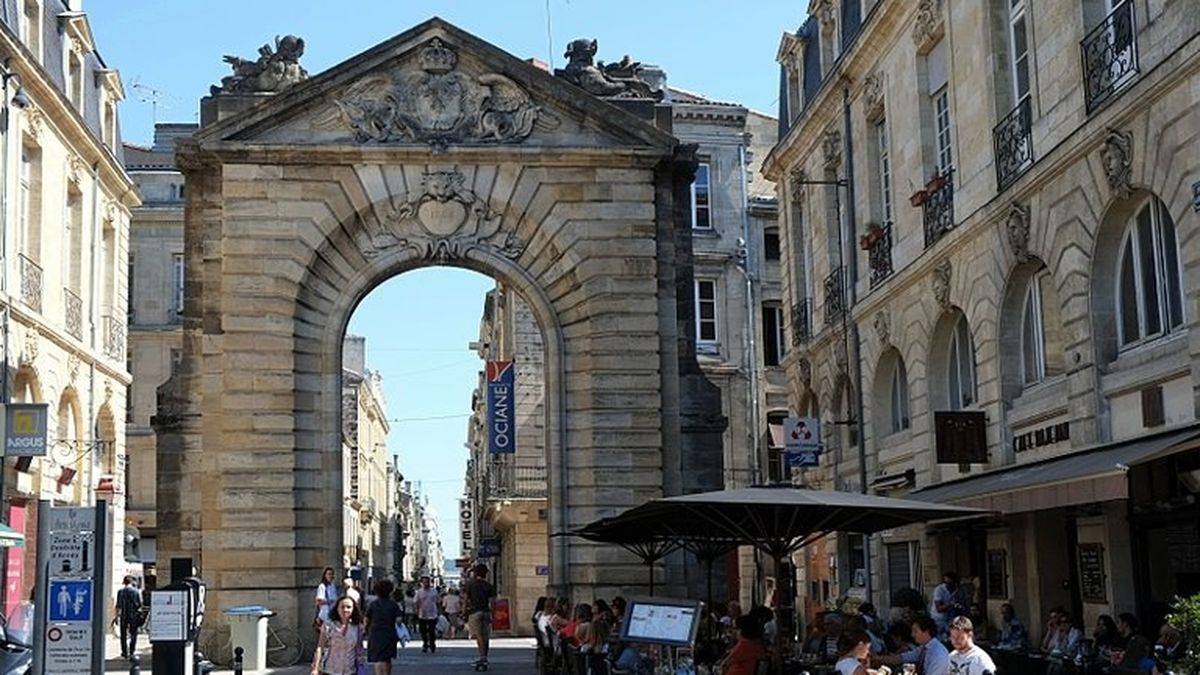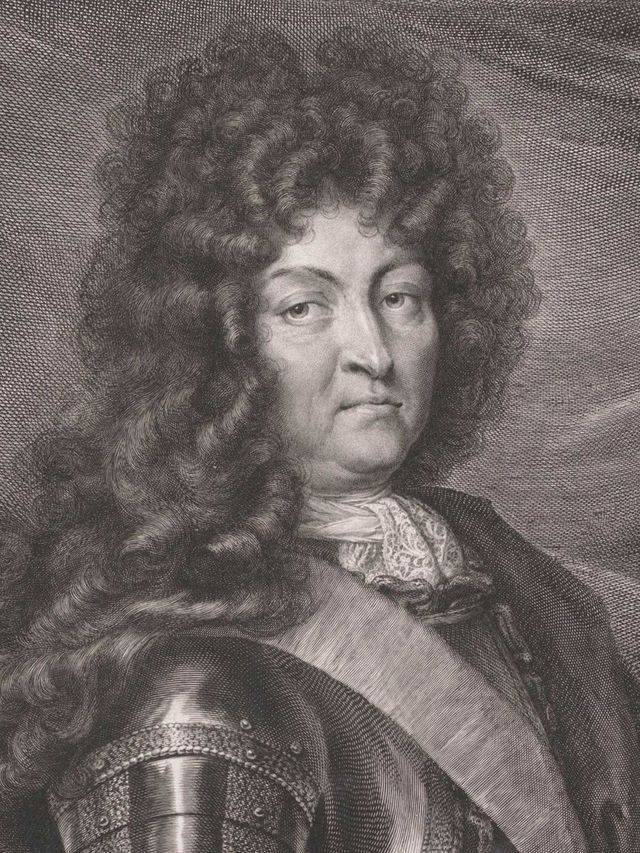 The gate | ©Patrick Despoix / CC-BY-SA
The gate | ©Patrick Despoix / CC-BY-SAEtymology
Let’s talk etymology! Where does the name Dijeaux come from? Two possibilities.
- It comes from Jove: they found an old Roman temple dedicated to this god, in the courtyard of a house near the gate. Porte de Jupiter, in patois, is porte di Jou, so... porte Dijeaux.
- We have the rue Judaïque ("Jew street") near our gate: because many Jews used to live in Bordeaux, since the Middle-Ages. So Dijeaux seems to derive from "Jews". Don’t forget the English ruled over Bordeaux and Aquitaine, in medieval times: so it would be porte di Jews, then Dijeaux in French!
A revisited medieval gate
In short... This gate was part of the fortified walls since a long time, extended in the 14th century by king of England Edward I.
It looked like a big tower flanked by 2 crenelated turrets, the whole thing defended by a moat.
In front of this impressive defensive system, took place this event, in 1653: cardinal Mazarin, queen Mary of Medici and her young son Louis XIV came to visit the city.
But we were in middle of the Fronde rebellion! And in Bordeaux, people waited for them resolutely, in front of our gate!
Indeed, cardinal and his royal band were pretty disapproved by Bordeaux inhabitants. Royal troops (more than 6 000 men) and the marshal de La Melleraye besieged the gate: more than 12 000 soldiers waited for them... take aim! 2 weeks later, the city finally gave up... definitively!
But here we are in the 18th century: change of direction! Marquis de Tourny, intendant of Guyenne, completely changed Bordeaux medieval's appearance: new streets, new squares...
They had just raised the Dauphine square... In order to decorate it, a gate would be great! Yes, but they had to demolish the old medieval gate of the 14th century: architect Portier was put in charge of the construction of the new gate, in 1748.
Sculptor Claude Francin, who also worked on the Aquitaine gate in Bordeaux, made the decoration.
Now, let’s see those sculptures: on the pediment, we have 3 fleurs de lis flanked by a crown and a cross. On both sides, we see helmets, flags, wings.
Below, a lion lying on a cartouche flanked by the date 1748. On the other side, we have, on the pediment, the city’s coat of arms flanked by a crown, tridents and two horn of plenty. Below, Neptune with two rams heads.


